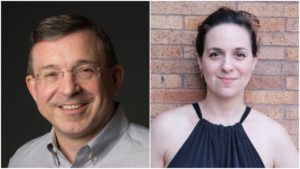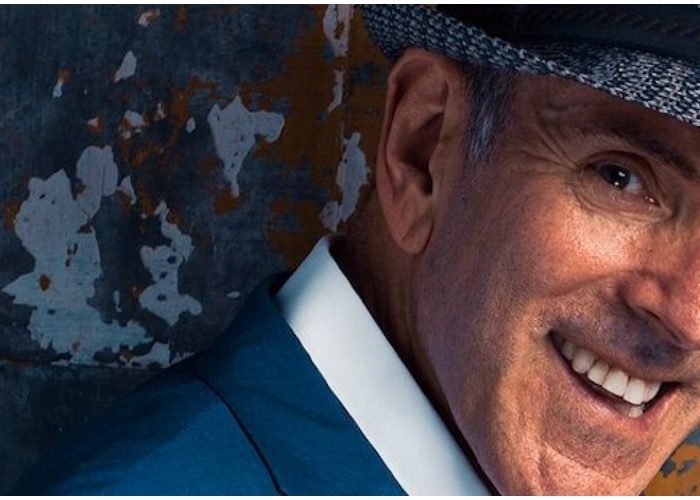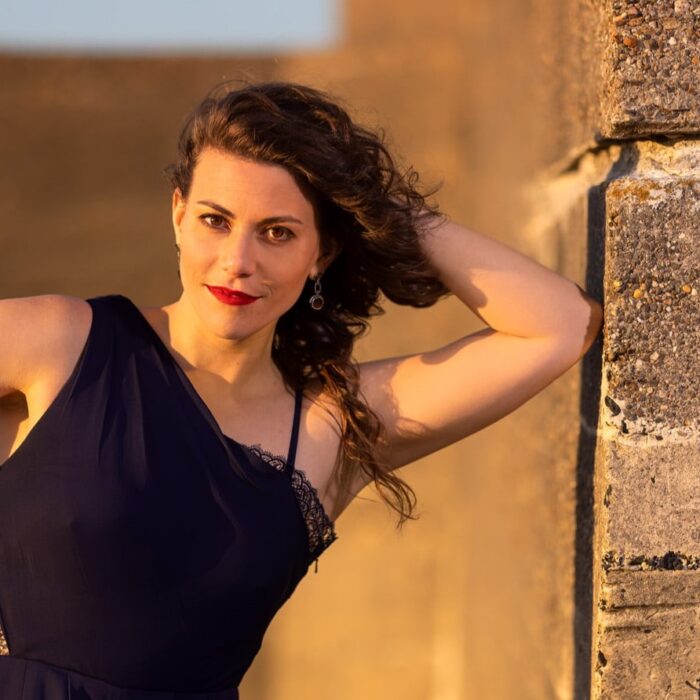
Q & A: Composer Thomas Cabaniss & Director Malena Dayen on Bringing ‘Firesongs’ to Life
By David SalazarOn June 18, 2022, the National Sawdust and Chelsea Factory will present Bare Opera’s production of Thomas Cabaniss’ “Firesongs.”
Cabaniss, a South Carolina Native, was an initiator of The Lullaby Project and The Somewhere Project, both at Carnegie Hall, and was the host and composer-in-residence for Carnegie Hall’s Link Up program between 2010-2020. In addition to the dozens of works for orchestra and chamber ensembles, Cabaniss has also composed numerous operas including “Denmark Vesey” and “The Sandman” as well as such choral works as “Celestial Fire” and “Behold the Star.”
OperaWire spoke to the composer about the creation of “Fire Songs,” its musical language, and what he hopes audiences will take away from it.
OperaWire: What inspired the creation of “Fire Songs?” What themes does it explore?
Thomas Cabaniss: After the pandemic lockdown of 2020, I began thinking about how songs and singing help us through even the most complicated times. Sometimes it’s through cathartic release, sometimes it’s through meditative concentration, and other times through shared choral moments.
Several years prior, I had worked on a set of songs adapted from the book of Jeremiah, including “My Song Is a Fire.” I realized that these songs could anchor a theatrical progression that takes us through wonder, passionate anger, peace and finally, acceptance. I drew on all kinds of songs with texts by a wide variety of poets. Some of the songs were written years ago and others were created especially for this cycle.
Three of the songs (with text by Wendell Berry) were written collaboratively with composer Mel Marvin, my mentor and great friend. We wrote them as a way of working through our covid isolation together.
OW: What is the musical language for the work?
TC: I am a tonal composer, but I also love dissonant clusters as a color in my music. I also love repetitive (or minimalist) structures, and I love letting the particular text of a song dictate the language it seems to require. Born and raised in the Lowcountry of South Carolina, all my music has the DNA of the rhythms that are native to the place.
OW: What is your process for creating the musical language of any work you set out to create?
TC: I spend a lot of time speaking, reciting, mumbling and shouting the text of a lyric. This is best done alone. I improvise a lot, again, usually alone, but now at the piano. Once I have a “half-baked idea,” I try to design the piece that contains this spirit of my favorite improvisations.
OW: What was the greatest challenge you had to overcome in composing “Fire Songs?”
TC: They are the same as songwriters face every time they work: how do I create an entire world in just a couple of minutes? Not easy, but a joy when it comes together.
OW: In this particular work, were there other pieces or song cycles that you drew inspiration from? Which ones and how did they contribute to the creation of this song cycle?
TC: I love “Dichterliebe” and “The Diary of One Who Vanished,” though I can’t say I consciously tried to imitate either. But they are in me, and they probably show, even when I think they don’t.
OW: What kind of musical journey do you want to take audiences on with “Fire Songs?”
TB: I guess I hope it will move you through a number of different energies, and that those will find physical and visual complements in the work of the production’s creative artists.
The production will be directed by long-time Bare Opera collaborator Malena Dayen. Over the past few years, she has helmed productions of “Don Giovanni,” “Maria de Buenos Aires,” and “The Presence of Odradek,” for the company, as well as “The Late Walk” and “Heroes of New York” as part of the Decameron Opera Coalition. Dayen has also led a series of productions for Teatro Grattacielo, over the past few years.
OperaWire also had the chance to speak with Dayen about her approach to the work, her long-time collaboration with Cabaniss and the team she assembled for the production.
OperaWire: What inspired you to take on “Firesongs?” What do you find most inspiring about Thomas Cabaniss’ work?
Malena Dayen: I’ve known Tom’s work for twenty years and I’ve always been a fan of his music. I sang his art songs in recital many times, but I’ve also worked with him at Lullaby project in Carnegie Hall, collaborated with him in his work in operas for babies and even sang along him for years in “Moving Star,” a vocal imposition collective in residence at Carnegie Hall. His music is absolutely personal and original, fun and full of soul; at the same time universal and inclusive and unmistakable Tom’s.
OW: “Firesongs” is not an opera but a song cycle. What are the particular challenges of staging a song cycle? Do you approach each piece as its own story or do you seek to build a larger story or thematic bridge across each of the different songs?
MD: In addition to my interest of working with Tom, the challenge of staging art songs is what most attracted me to this project. Tom wrote these songs all throughout his career, based on a group of poets that range from Tracy K. Smith, Wendell Berry and Maya Angelou to W. H. Auden and Robert Louis Stevenson, including less known poets like Douglas Langworthy and Evelyn Lowe. But they all together tell a story and I’m working to express that larger narrative in this production.
OW: How did your process for building your concept for this differ from how you would approach an opera?
MD: The nature of the piece is abstract, emotional and poetic (no pun intended!). My approach was the same as in an opera, in the sense of trying to find a way to give space for the core of the piece to live on stage. And I’m excited to share what we found: an expansion of the conventional recital stage that includes movement, art and a theatrical expression of the experience of being in community.
OW: Tell me about the team you assembled for this production. How did you pick your collaborators and what made each of them ideal for “Firesongs?”
MD: I’m working with a group of artists that I admire and I’m lucky to consider “my team.” I have worked with Troy Ogilvie (choreographer), Lupe Marin (original artwork) and Sangmin Chae (projections) on several projects and we are developing a language together that I think finds the perfect vessel in “Firesongs.” We have an amazing cast including Inna Dukach, Shanelle Woods, David Charles Tay and Anicet Castel, as well as Eugenia Forteza, Marcelo Guzzo and Chanan Ben Simon that have sung in several of my productions before. And my artistic and life partner, David Rosenmeyer, who’s the music director of the show and has collaborated with Thomas for 20 years!
OW: What kind of experience do you want audiences to have with “Firesongs?”
MD: “Firesongs” explores questions of meaning, pain, healing and the experience of being. I hope each member of the audience can find something in the performance that resonates with their own questions.


